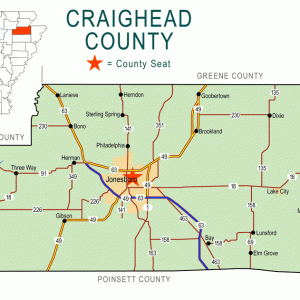calsfoundation@cals.org
Brookland (Craighead County)
| Latitude and Longitude: | 35°54’00″N 090°34’55″W |
| Elevation: | 262 feet |
| Area: | 7.80 square miles (2020 Census) |
| Population: | 4,064 (2020 Census) |
| Incorporation Date: | April 7, 1911 |
Historical Population as per the U.S. Census:
|
1810 |
1820 |
1830 |
1840 |
1850 |
1860 |
1870 |
1880 |
1890 |
1900 |
|
– |
– |
– |
– |
– |
– |
– |
– |
– |
– |
|
1910 |
1920 |
1930 |
1940 |
1950 |
1960 |
1970 |
1980 |
1990 |
2000 |
|
– |
326 |
270 |
276 |
334 |
301 |
465 |
840 |
919 |
1,332 |
|
2010 |
2020 |
|
|
|
|
|
|
|
|
|
1,642 |
4,064 |
|
|
|
|
|
|
|
|
The city of Brookland has been closely linked over the years to Greensboro, the earliest settlement in what is now Craighead County. Construction of railroads led to the establishment of Brookland at its current location, and the city was incorporated in 1911.
When Arkansas became a state, much of its northeastern corner consisted of sloughs and swamps in the St. Francis and Cache river bottoms. The exception was Crowley’s Ridge, a narrow highland that begins in southeastern Missouri and runs south to Helena-West Helena (Phillips County). Joseph Willey moved from North Carolina to land on Crowley’s Ridge in 1835, erecting a grist mill on Lost Creek, about eleven miles north of the current city of Jonesboro (Craighead County). Other settlers joined Willey, and the community was named Greensboro, possibly because it was located at the time in Greene County. When Craighead County was established in 1859, Greensboro was its largest settlement, with two general merchants, two grocers, two ironsmiths, a shoemaker, two cabinet makers, three carpenters, a jeweler, a basket maker, a seamstress, two saddle makers, five physicians, a lawyer, a drugstore, a hotel, and a school. A road named for Greensboro ran from Gainesville (Greene County) to Wittsburg (Cross County) along Crowley’s Ridge. Greensboro had a post office from 1844 until 1906 (although it was called Delaware Hill until 1850, probably as a reference to a group of Lenape—also known as Delaware—who lived in southeastern Missouri and northeastern Arkansas between the 1780s and 1829). Several churches and a Masonic lodge were established in the community after the Civil War.
In 1882, two railroads were being built through Craighead County: the Texas and St. Louis Railroad (commonly known as the Cotton Belt) and the St. Louis, Iron Mountain and Southern Railway (generally called the Iron Mountain). The railroads bypassed Greensboro, but both happened to cross the farm of Albert Brooks. Brooks negotiated with both railroads for construction of depots and platting of a town on his land. Even before railroad construction was completed, a post office called Powell had been established, and a school district had been created.
Brooks succeeded in establishing a post office named Brookland in 1882. Within two years, the new community had steam-powered saw grist mills, a church, a public school, and a population of 160. Brookland also had a hotel, a saloon, three general stores, three doctors, and a druggist. By 1900, Brookland had added a stave mill, a cotton gin, and several additional stores. Greensboro faded into oblivion, with only one business still operating in 1909. Some of the citizens had relocated to Jonesboro and others to Paragould (Greene County), but most of them had moved to Brookland.
The city was incorporated in 1911. It continued to thrive until the Depression lowered agricultural prices and hampered businesses. Stores closed in Brookland and people moved away. World War II drew many men from the city into military service. Some perished on the battlefield, and others obtained new jobs after the war that drew them away from their hometown. Improved highways also allowed people to travel to larger cities for shopping and entertainment.
Unlike Greensboro, though, Brookland did not fade away. Instead, it began to thrive as a bedroom community for Jonesboro. Arkansas Highway 1, running north from the Mississippi state line into Missouri, was built after the Arkansas General Assembly formed a state highway system around 1924. The route, mostly unpaved, passed through Brookland. During the Depression, many sections of the highway were paved and improved by the Works Progress Administration (WPA). In 1978, this section of highway was re-designated U.S. Highway 49. After 2000, a bypass was created to route highway traffic around Brookland.
In the twenty-first century, the city still supports eleven churches and a few dozen businesses, including construction specialists, restaurants, stores, childcare facilities, a bank, and a country music and variety show. The Brookland School District has a total enrollment of more than 1,700 in grades K-12.
For additional information:
City of Brookland. https://www.cityofbrookland.com/ (accessed February 28, 2025).
Eaton, Hershel L. (Plug). “Brookland, Arkansas: A Brief History.” Craighead County Historical Quarterly 20 (October 1982): 1–7. Reprinted in Craighead County Historical Quarterly 44 (January 2006): 3–10.
Williams, Harry Lee. History of Craighead County, Arkansas. Little Rock: Parke-Harper Company, 1930.
Steven Teske
Butler Center for Arkansas Studies





Comments
No comments on this entry yet.